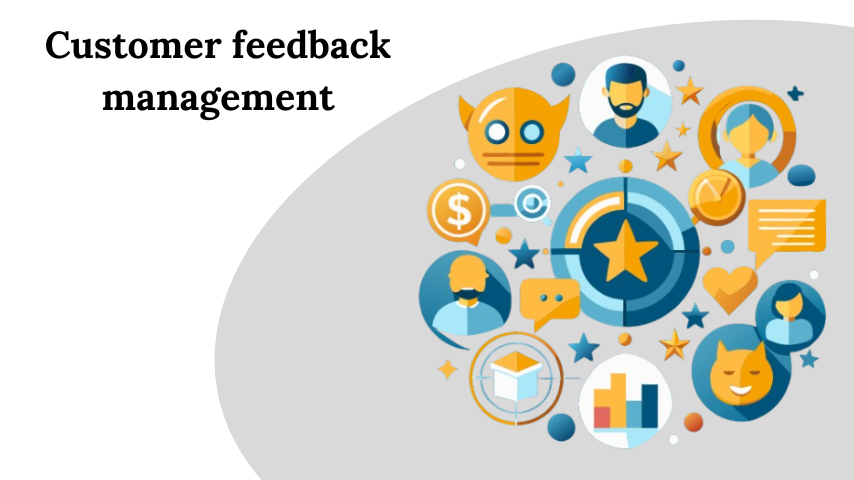Customer management is the backbone of successful businesses in today’s competitive marketplace. It’s a holistic approach that goes far beyond simple transactions, encompassing every interaction and touchpoint between a company and its customers. In an era where customer experience can make or break a brand, understanding the depth and breadth of customer management has become crucial for organizations of all sizes.
Understanding Customer Management
Definition of Customer Management
Customer management is a strategic approach that involves:
- Identifying potential customers
- Attracting and acquiring new customers
- Developing and maintaining strong relationships
- Retaining existing customers
- Maximizing customer satisfaction and loyalty
Key Components of Effective Customer Management
Customer Relationship Management (CRM)
- Tracking customer interactions
- Managing customer data
- Analyzing customer behavior and preferences
Customer Support
- Providing timely and effective assistance
- Resolving issues quickly and efficiently
- Ensuring customer satisfaction
Customer Feedback Management
- Collecting and analyzing customer feedback
- Using insights to improve products and services
- Creating a continuous improvement cycle
The Importance of Customer Management
Why Customer Management Matters
Customer management is critical for several reasons:
- Increases customer retention rates
- Drives revenue growth
- Builds brand loyalty
- Provides competitive advantage
- Helps understand customer needs and expectations
Economic Impact of Effective Customer Management
Companies with strong customer management strategies can:
- Reduce customer acquisition costs
- Increase customer lifetime value
- Improve overall business performance
- Create more predictable revenue streams
Strategies for Effective Customer Management
1. Implementing a Robust CRM System
A comprehensive CRM system should:
- Centralize customer information
- Track customer interactions across multiple channels
- Provide actionable insights
- Enable personalized communication
2. Developing a Customer-Centric Culture
Key elements include:
- Training employees in customer service
- Encouraging empathy and understanding
- Creating customer-focused policies
- Rewarding employees who excel in customer interactions
3. Leveraging Technology
Modern customer management involves:
- Artificial Intelligence (AI) powered insights
- Automated communication tools
- Predictive analytics
- Omnichannel communication platforms
4. Customer Feedback Management Best Practices
Effective customer feedback management involves:
- Creating multiple feedback channels
- Implementing systematic feedback collection
- Analyzing feedback data
- Taking actionable steps based on insights
- Closing the feedback loop with customers
Challenges in Customer Management
Common Obstacles
Data Fragmentation
- Scattered customer information
- Inconsistent data collection
- Difficulty in creating comprehensive customer profiles
Technology Integration
- Complexity of implementing new systems
- Cost of advanced customer management tools
- Training employees on new technologies
Personalization at Scale
- Maintaining personal touch with growing customer base
- Creating meaningful interactions
- Balancing automation with human connection
Advanced Customer Management Techniques
Predictive Customer Management
- Using data analytics to anticipate customer needs
- Identifying potential churn risks
- Creating proactive engagement strategies
- Personalizing customer experiences
Emotional Intelligence in Customer Management
- Understanding customer emotions
- Developing empathetic communication strategies
- Training staff in emotional intelligence
- Creating emotionally resonant customer experiences
Measuring Customer Management Success
Key Performance Indicators (KPIs)
Critical metrics include:
- Customer Satisfaction Score (CSAT)
- Net Promoter Score (NPS)
- Customer Retention Rate
- Customer Lifetime Value
- First Response Time
- Resolution Rate
Q1: What is the difference between customer service and customer management?
Customer service is a specific interaction, while customer management is a comprehensive strategy covering the entire customer journey.
Q2: How often should companies collect customer feedback?
Regular feedback collection is recommended:
- After key interactions
- Quarterly surveys
- Annual comprehensive reviews
Q3: What technologies are essential for modern customer management?
- CRM software
- AI-powered analytics tools
- Multichannel communication platforms
- Feedback collection systems
Q4: How can small businesses improve their customer management?
- Use affordable CRM tools
- Prioritize personal interactions
- Implement systematic feedback collection
- Focus on creating memorable experiences
Q5: What role does customer feedback management play in business growth?
Customer feedback management:
- Provides insights for product improvement
- Helps identify potential market opportunities
- Increases customer satisfaction and loyalty
- Drives continuous business innovation
Conclusion
Customer management is no longer an optional business strategy—it’s a fundamental requirement for success in today’s competitive landscape. By embracing comprehensive customer management approaches, businesses can create meaningful connections, drive loyalty, and achieve sustainable growth.
The key lies in understanding that customer management is a dynamic, ongoing process that requires continuous learning, adaptation, and commitment to delivering exceptional experiences.
Companies that invest in robust customer management strategies, leverage technology effectively, and maintain a genuine commitment to customer satisfaction will be best positioned to thrive in an increasingly customer-centric world.
Final Thoughts
Remember, effective customer management is about building relationships, not just processing transactions. It’s an art and science that combines technology, empathy, and strategic thinking to create lasting value for both businesses and their customers.
